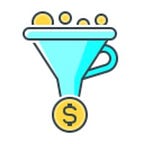3 indicators that your customer success team is heading in the right direction
I have stated this blog post with this statement because I personally spend a lot of time pouring over our stats and analyzing what I can understand from these numbers. The biggest learning, I can pass on from my time spent analyzing numbers as a sales leader is that ‘Not all statistics are independently important’.
At times, it makes sense to analyse numbers in conjunction with other indicators to make sense of the whole picture. What is equally true is that no single team in an organisation can cause an impact. Talking about a customer success team’s achievement without acknowledging the role of the customer support team, sales teams and the product team is just downright irrelevant and rash. As a sales leader, I am a fan of giving credit where it is due. All progress we have made at Hiver has been due to all team’s involved. Customer success and sales alone have not pushed the organisation forward.
Without adding to the word count of the blog, let us start with the primary indicators that your customer success team is headed in the right direction.
The most obvious … churn
Once a customer success team is in place. The metric that makes the most sense is the Net Churn rate. There is a school of thought that the gross churn rate should also be looked at. Personally, I believe that the net churn rate is a better indicator. If your customer success team can do a good job of maintain their portfolio and driving growth while compensating for loss in revenue. Ideally, your top 20% customers will make up 80% of your revenue.
So, if your customer success managers are doing a good job of keeping your top 20% customers growing your smaller account churn should not really hurt your that much. Having said this, if your product does not fit the traditional SaaS model or is majorly reliant on smaller deals, you may not enjoy the slower bleed or what is also called ‘death by a thousand cuts’ in customer success circles.
ARPA and customer lifetime value
With churn under control, the one metric that should show increase is the Average Revenue Per Account (ARPA). At the end of the day, a stable and evolving product will make for a happy customer. This should translate into greater business from existing customers and a steady increase in the ARPA overall. Looking at ARPA independently can be a dangerous overview of your statistics. In a nutshell, ignore ARPA at your own peril.
A similar but independent metric is the CLTV (Customer Lifetime Value), you might hear people call this simply as the LTV (Life Time Value). Once your customer success activities have kicked in, you will be able to see a steady increase in the CLTV. The more successful your customer success and product teams are at delivering a steady stream of value to your customers, the more your CLTV will be. This is also directly dependent on the churn that your organization is experiencing and is linked to churn. Higher churn will lower the CLTV.
Finally,… product adoption and usage
Before I start talking about product adoption. I want to make it clear that most organisations struggle to measure this effectively. At Hiver we use a blend of software and human intelligence to effectively measure how our customers are adopting to existing features and any new features that we might have launched. We have made it a point to sync up every month to discuss the portfolio of each CSM and see how his/her portfolio is performing in terms of product adoption and usage. We have started to detect possible churn candidates and identified candidates that are fit for our larger automation features. This is a priceless activity for the team as it gives us a chance to plan on an account basis as opposed to the whole region alone. It is easier to overlooking an individual CSMs portfolio when you are planning the larger picture. This activity gives me a good insight into what is brewing at a CSM level too.
I would also like to point out that the product team also has a major role to play in product adoption at a feature level. Poorly designed features are rarely adopted by customers. In addition, every time a new feature is added, it is vital that in product cues are added to increase adoption.
